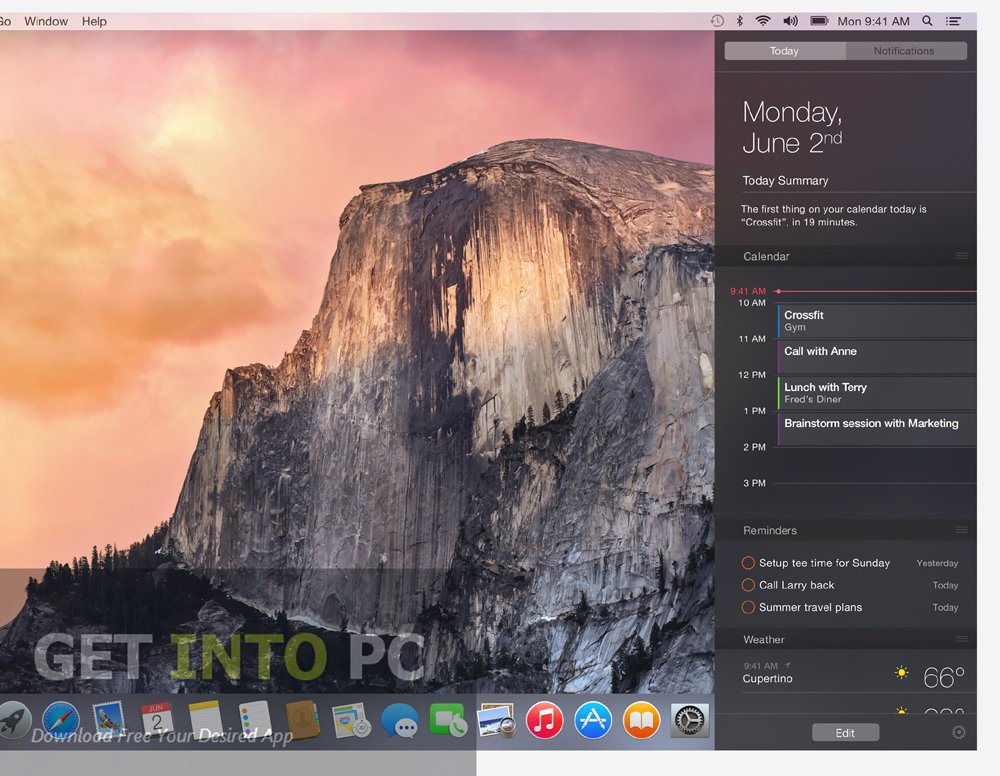Bootable USB Installers for OS X Mavericks, Yosemite, El Capitan, and Sierra
I've downloaded Yosemite Zone 10.10.1 DMG file, and created a 'bootable' USB stick with TransMac, but simply it doesn't boot. And the problem with BootdiskUtility is that needs to delete all files, and you can't select a specific partition without deleting the whole disk.
First, review this introductory article: Create a bootable installer for macOS. Second, see this How To outline for creating a bootable El Capitan installer. Simply replace the Terminal command with the one from the preceding article by copying it into the Terminal window. You will need an 8GB or larger USB flash drive that has been partitioned and formatted for use with OS X.

Drive Partition and Format
- Open Disk Utility in the Utilities' folder.
- After Disk Utility loads select the drive (out-dented entry with the mfg.'s ID and size) from the side list.
- Click on the Erase tab in the Disk Utility toolbar. Name the drive, 'MyVolume'. <---- IMPORTANT!
- In the drop down panel set the partition scheme to GUID. Set the Format type to Mac OS Extended (Journaled.)
- Click on the Apply button and wait for the Done button to activate. When it does click on it.
- Quit Disk Utility.
Sep 13, 2018 Mac Os X Catalina Dmg Make Bootable Yosemite Usb From Dmg Os X 10.9 Mavericks Installesd.dmg Os X Sierra Free Download Dmg Dmg Canvas 2.1.7 Serial Descargar Os X Yosemite 10.10 Dp1.dmg High Sierra Amd V2.dmg Fugu 1.2 0 Universal English Dmg Install Mountain Lion Dmg Virtualbox Convertir Dmg A Isp Con Ultraiso. Boot into Yosemite with the kext-dev-mode=1 boot flag 2. Open OS X terminal and type the following lines, followed by after each line. The image restore and file copying may take a while to complete, and at the end of the process, the Installer volume is renamed to “OS X Base System'. Bootable Installer Yosemite Installer. Connect the USB flash drive or other volume that you're using for the bootable installer. Open Terminal, which is in the Utilities folder of your Applications folder. Type or paste one of the following commands in Terminal. These assume that the installer is in your Applications folder, and MyVolume is the.
Create Installer
Open the Terminal in the Utilities' folder. Choose the appropriate command line (in red) depending upon what OS X installer you want. Paste that entire command line from below at the Terminal's prompt:
Command for macOS High Sierra:
sudo /Applications/Install macOS High Sierra.app/Contents/Resources/createinstallmedia --volume /Volumes/MyVolume --applicationpath /Applications/Install macOS High Sierra.app
Command for macOS Sierra:
sudo /Applications/Install macOS Sierra.app/Contents/Resources/createinstallmedia --volume /Volumes/MyVolume --applicationpath /Applications/Install macOS Sierra.app
Command for El Capitan:
sudo /Applications/Install OS X El Capitan.app/Contents/Resources/createinstallmedia --volume /Volumes/MyVolume --applicationpath /Applications/Install OS X El Capitan.app
Command for Yosemite:
sudo /Applications/Install OS X Yosemite.app/Contents/Resources/createinstallmedia --volume /Volumes/MyVolume --applicationpath /Applications/Install OS X Yosemite.app

Bootable Yosemite Usb From Dmg Drive
Command for Mavericks:

Bootable Yosemite Usb From Dmg Software
sudo /Applications/Install OS X Mavericks.app/Contents/Resources/createinstallmedia --volume /Volumes/MyVolume --applicationpath /Applications/Install OS X Mavericks.app
Press RETURN. You will be asked for your admin password. It will not echo to the Terminal window. Then press RETURN again. Wait for the return of the Terminal prompt signifying the process has completed. It takes quite some time to finish. Be patient.
Bootable Yosemite Usb From Dmg File
Sep 13, 2018 1:16 PM